Stop Measuring Results: Start Measuring Predictive Indicators First
3 steps to implementing Predictive Metrics and achieving better results.
How you noticed how most companies have huge dash-boards and spreadsheets containing dozens of metrics? But to what end? Does anyone really look at these metrics, and if they do, does anyone know what they should be doing differently?
Companies are measuring the wrong things, and end up producing the wrong results. So, if you want to improve your results, we suggest you stop measuring them.
It sounds crazy, but there is a better way. If you wanted to lose weight, would you just weigh yourself on a daily or weekly basis hoping that would produce the result you desired? Of course not. To optimize your success with weight loss, you would measure on a daily basis, a few vital parameters - food intake and exercise – and over time you’d expect to see the results on the scales. Through these few key measurements, you could predict success or failure the next time you stepped on the scale.
How does this apply to improving results in your business? Companies are producing the wrong results, because they’re measuring the wrong things. If you want to ensure long–term success you should be using short-term predictive metrics to quickly inform you if you’re on the right path. At the heart of achieving strategic goals is a nimble organization that can adapt to produce the desired results. When we use the words “nimble” and “adapt”, what we really mean is an organization’s ability to change.
The best use of predictive metrics is to manage change by measuring behavior. It informs you whether or not the day to day behavior of the people you are counting on to deliver long term success, are doing the right things today. That’s why it’s critical to not just measure the results, but measure those things that predict the results.
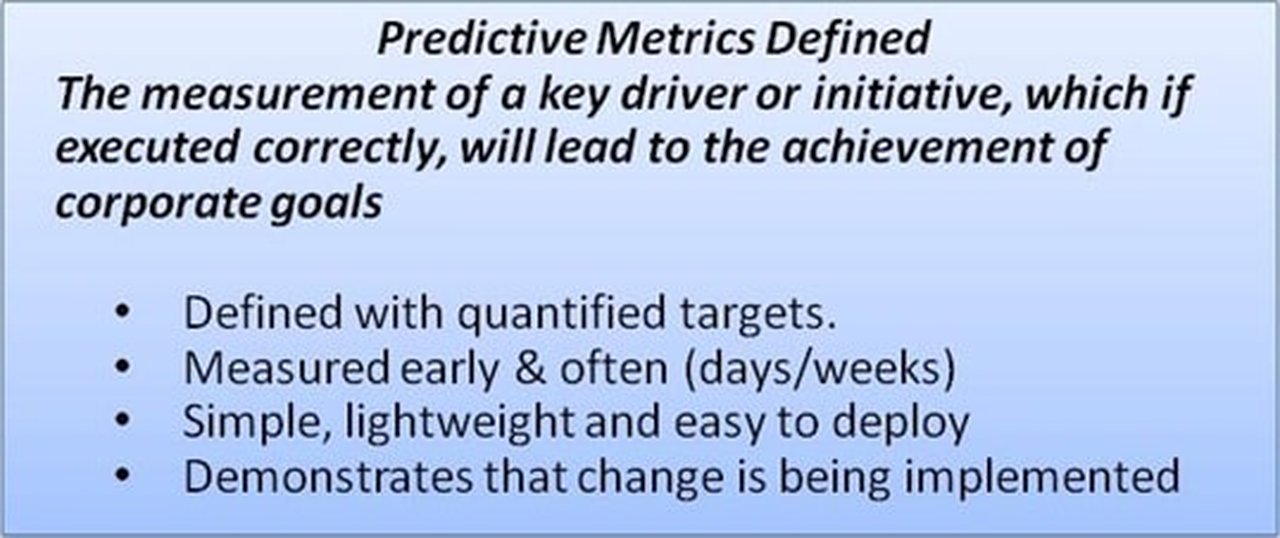
In this blog, we’ll tell you how to identify the right predictive metrics, how to track and manage the metrics to ensure the organization is on track, and then how to course correct when a program comes off the rails.
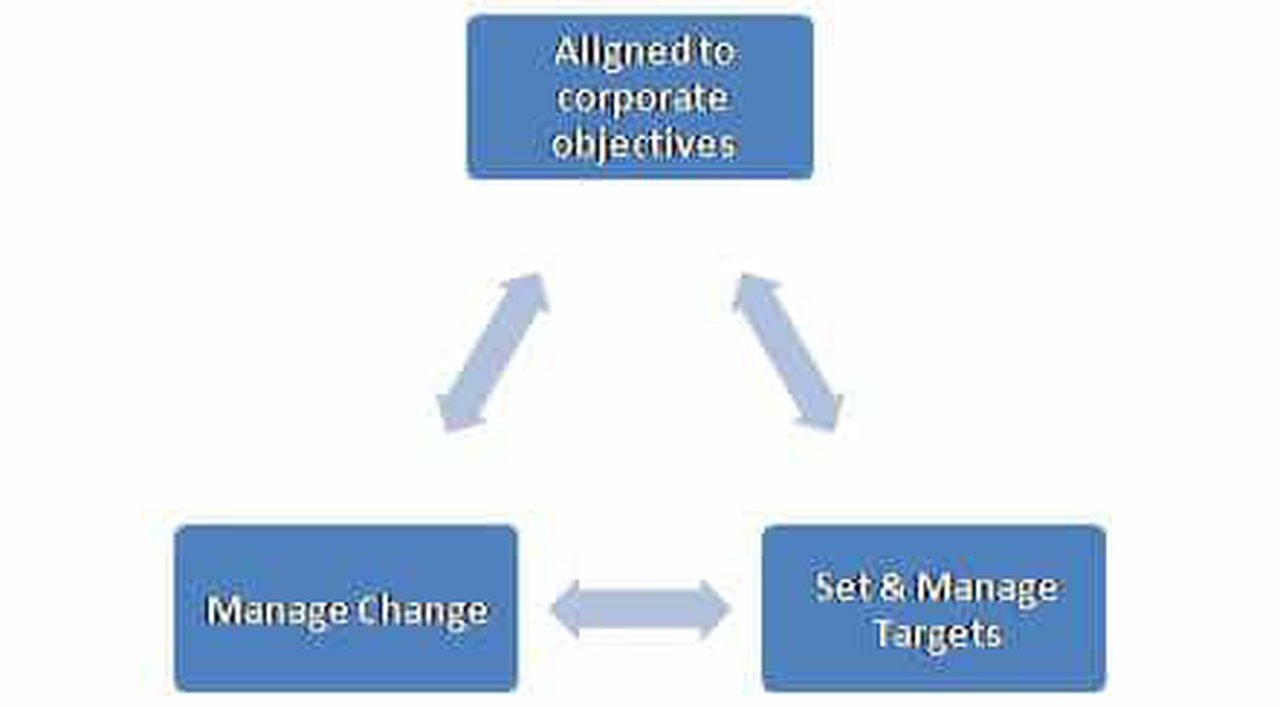
1. Alignment to corporate goals
Predictive metrics are only useful if they have a direct line of site to corporate goals. The whole purpose is to ensure that the organization is doing the right things today to ensure long-term success. Below is an example of how a start-up software company used predictive metrics to ensure the successful implementation of the use of funds from it’s A Round funding:
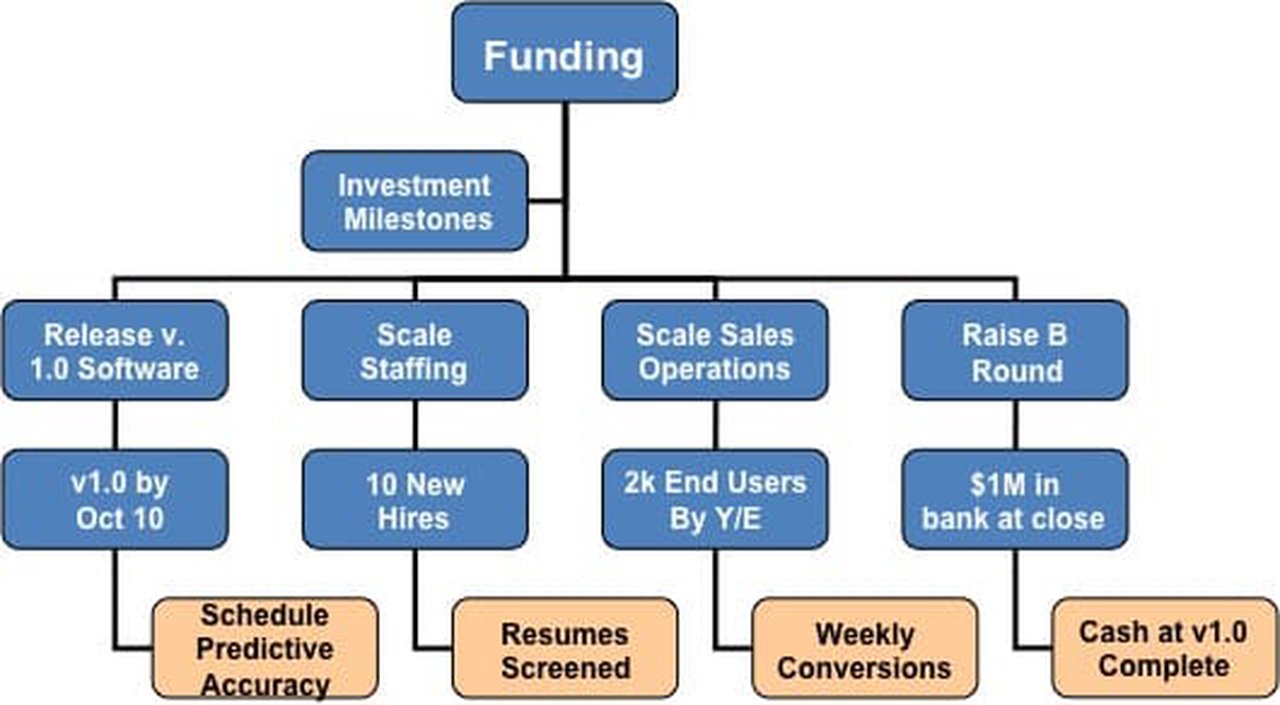
To ensure that the company will be successful in meetings its commitments to their investors, the measurement of these four predictive metrics, gives them the best chance to manage to a successful outcome.
2. Set and manage targets
Predictive metrics should always be defined and have targets. One of the best methodologies for setting targets with little other information is through the application of half-life principles. Created by Art Schneiderman (VP, Quality for Analog Devices) in the 1980s, this methodology allows organizations to estimate how long it will take to improve a specific process or initiative by fifty percent. The estimation is based on technology and organizational complexity, and is grounded in the analysis of over 100 process improvement initiatives.
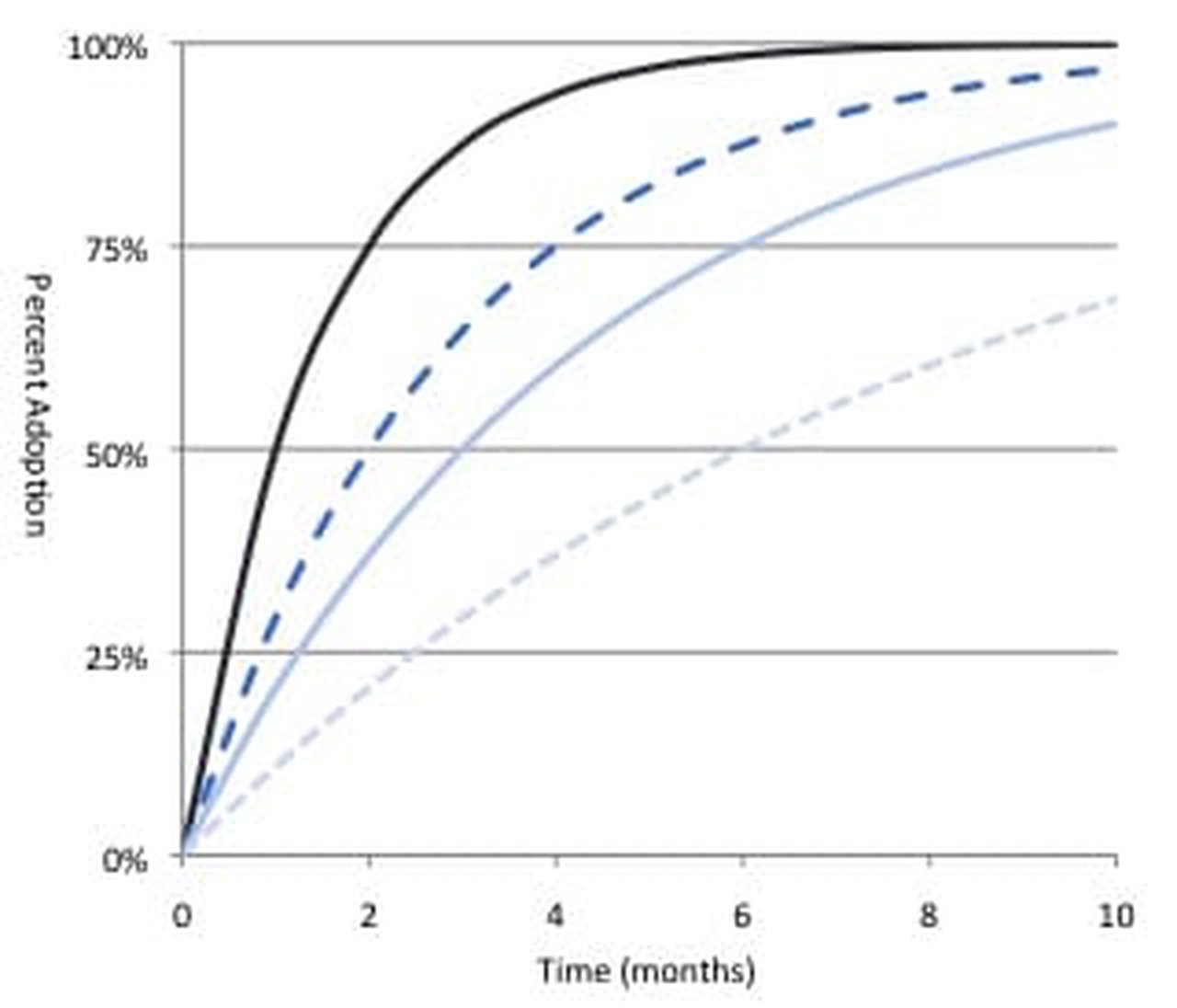
Within your organization, you can predict based on these two parameters, if you set the right targets, and then can proactively manage to the desired results.
3. Managing course correction
Inevitably, organizations will deal with circumstances where programs or initiatives are off track. The opportunity is to get teams re-focused and back on track as quickly as possible. The best class practice for managing course correction is the Out of Bounds review. Boundary conditions set early in the project, and when those boundaries are crossed, any one on the team can trigger an Out of Bounds review. In the example below, it can be seen that the criteria is clear (quantified). When a boundary is crossed, the team makes a recommendation for remedy, and can quickly obtain approval. This best in class process ensures that teams are not swirling for days or weeks, thus minimizing the risk of accomplishing the desired results.
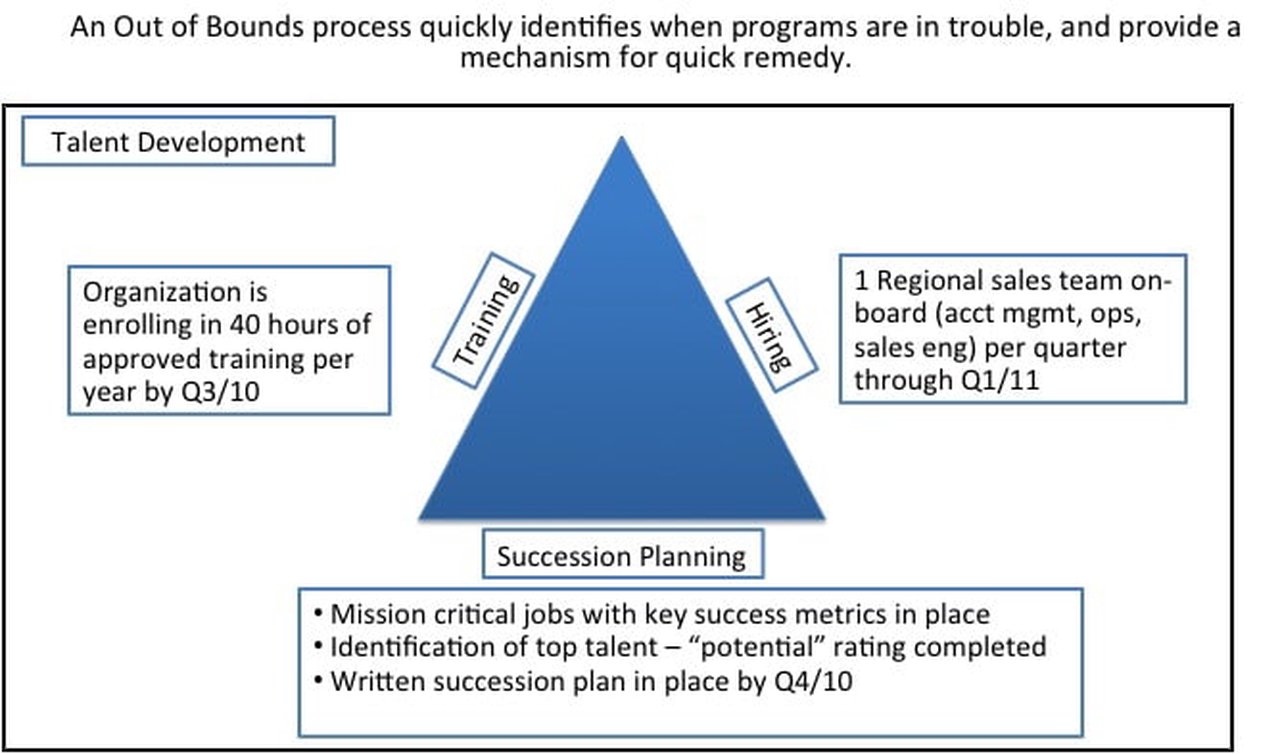
Predictive metrics are a powerful tool to ensure that companies achieve their desired results. It allows you a direct line of site to the corporate goals, targets to ensure you’re on-track, and a course correction tools to get back on track when programs come off the rails.
